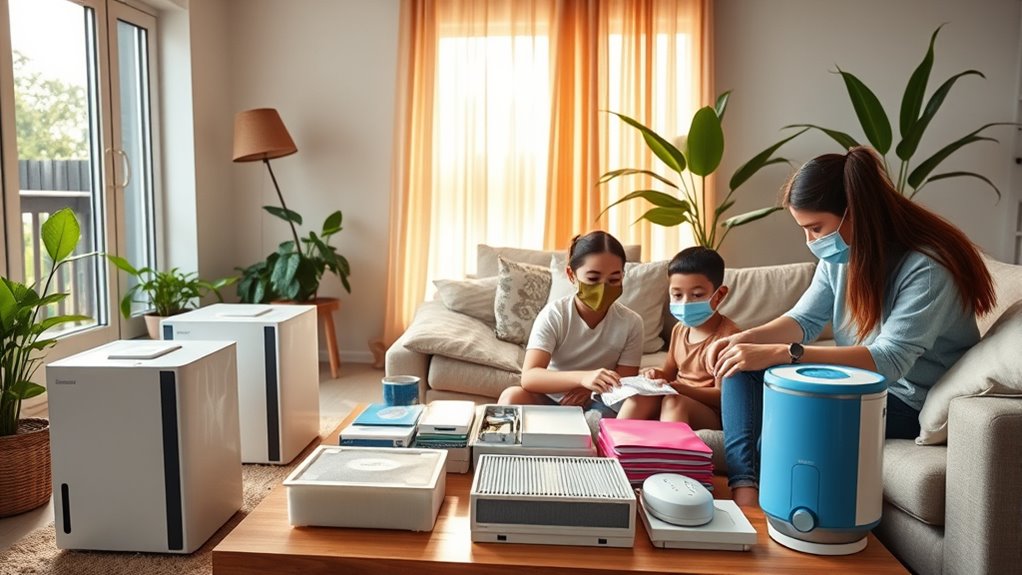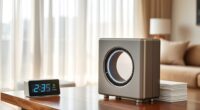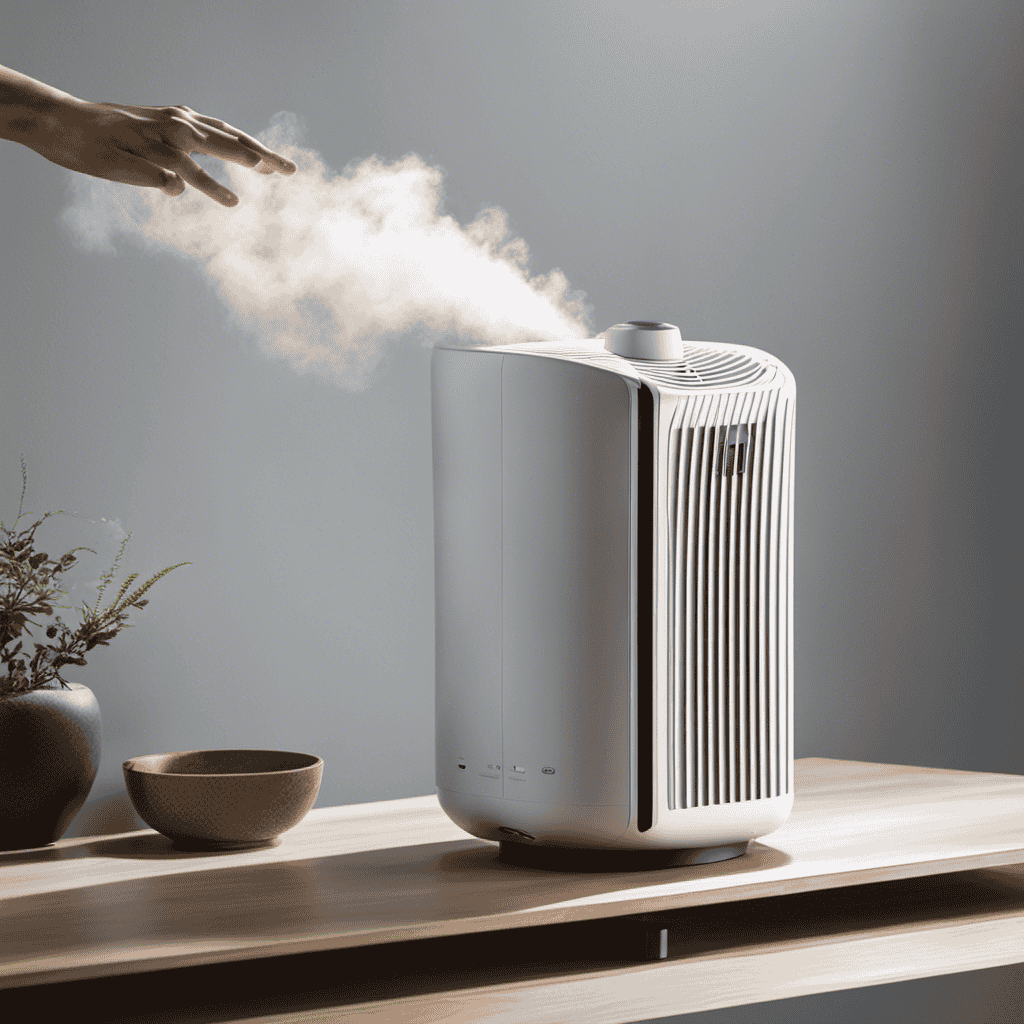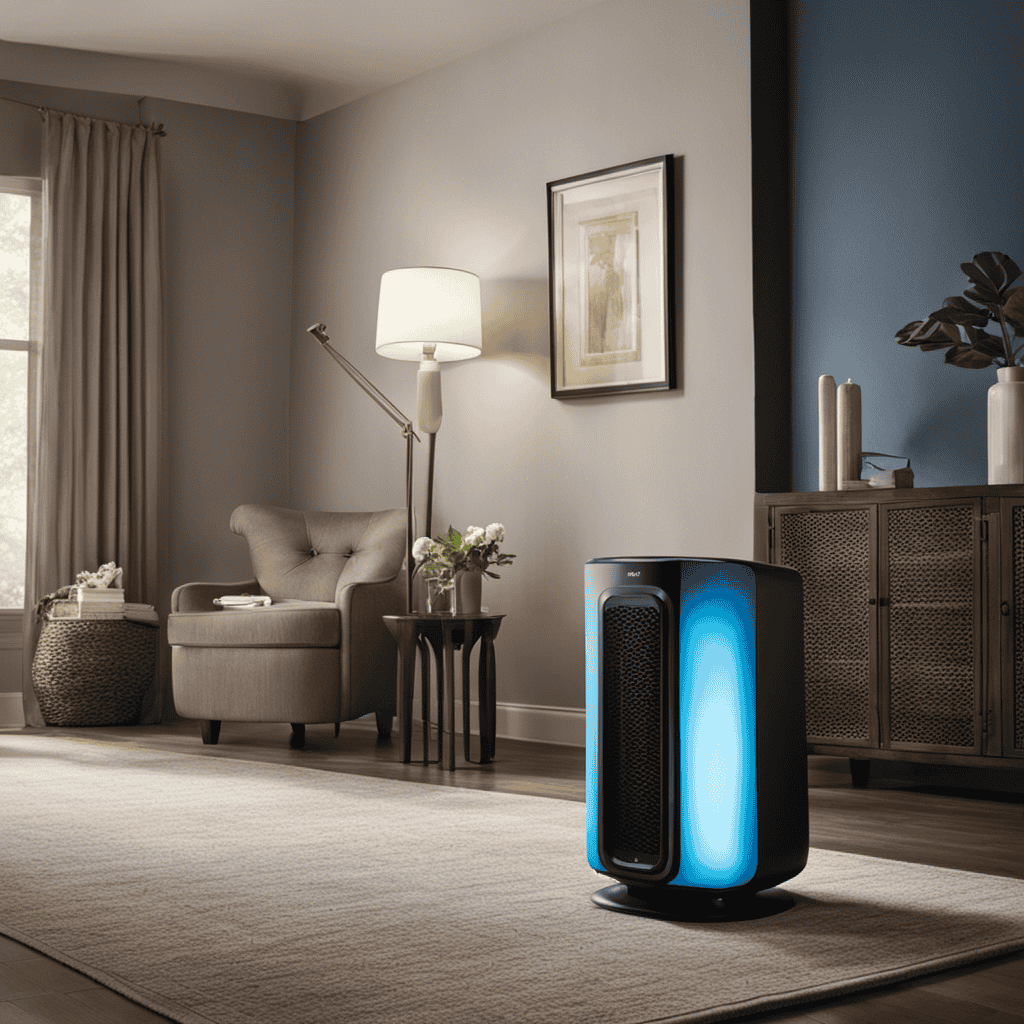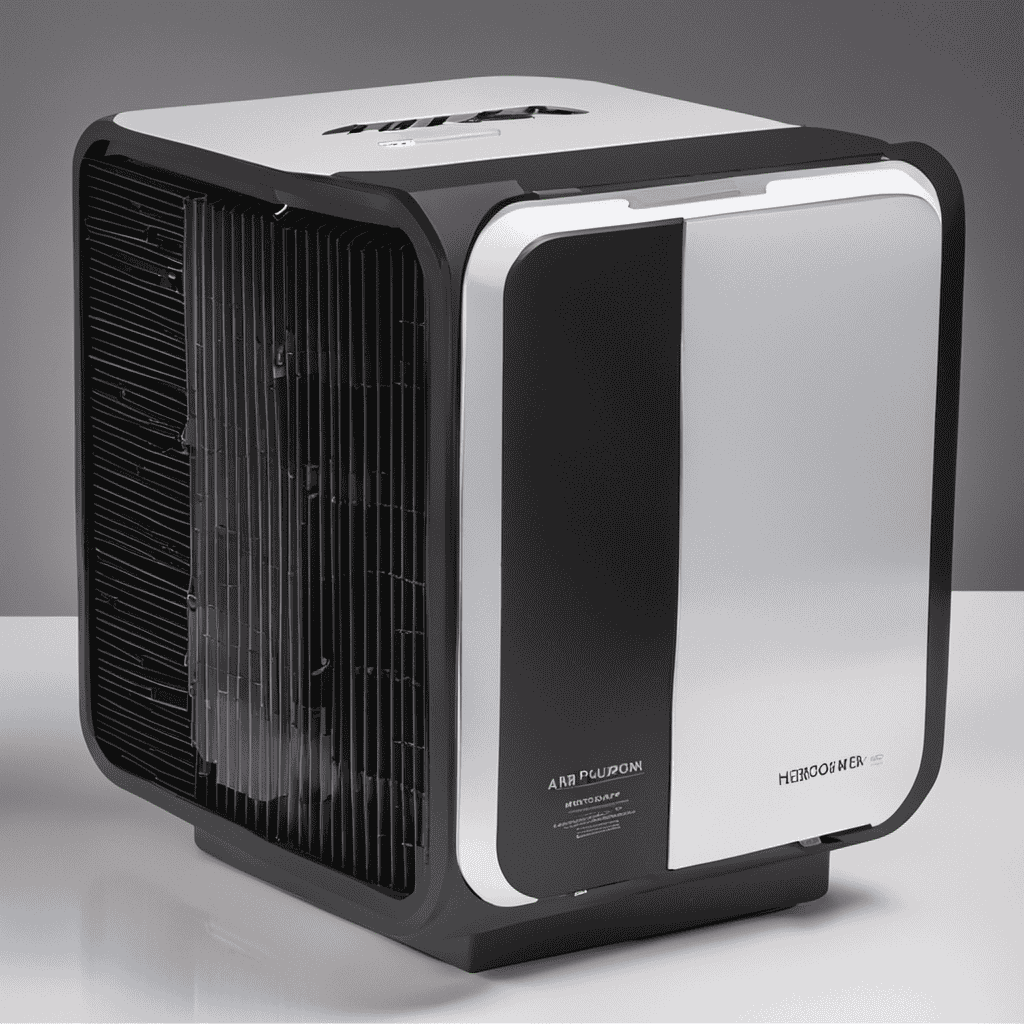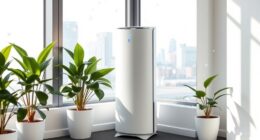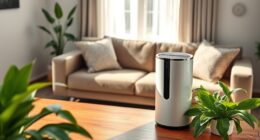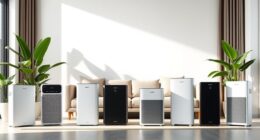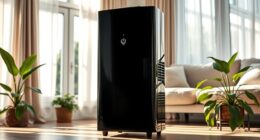To build a strong three-layer defense at home, start by reducing indoor pollutants like dust, mold, and pet dander through regular cleaning, ventilation, and air purifiers with HEPA filters. Next, identify and minimize your specific triggers, such as pollen or irritant chemicals, using allergen-proof covers and planning outdoor activities wisely. Finally, maintain a safe environment by inspecting for hazards and ensuring good habits. Keep going to discover more tips to protect your respiratory health effectively.
Key Takeaways
- Use high-efficiency HEPA air purifiers in key areas to filter airborne allergens and pollutants effectively.
- Minimize indoor triggers by controlling pet dander, mold, dust, and irritant chemicals through cleaning and environment management.
- Regularly monitor and identify individual asthma triggers, adjusting home and outdoor activities accordingly.
- Implement barrier protections like allergen-proof covers and frequent bedding washing to reduce dust mites and allergens.
- Maintain good ventilation, eliminate indoor smoking, and stay informed about outdoor air quality to reduce exposure risks.

Have you ever wondered what it takes to be an asthma warrior? It’s not just about managing symptoms when they strike; it’s about creating a safe environment that reduces your exposure to asthma triggers. One of the most important steps is focusing on indoor air quality. Since you spend a significant amount of time indoors, ensuring the air you breathe is clean can make a huge difference. You want to minimize pollutants like dust, pet dander, mold, and smoke that can worsen your asthma. Using high-efficiency air filters, keeping your home well-ventilated, and avoiding smoking indoors are simple but effective ways to improve air quality. Regularly cleaning surfaces, washing bedding, and reducing clutter can also cut down on dust and allergens. Additionally, choosing vetting air purifiers that effectively remove common indoor pollutants can significantly enhance your indoor air quality and support your asthma management.
But improving indoor air quality only works if you know what specifically triggers your asthma. That’s where trigger identification comes into play. You need to pay close attention to what causes your symptoms to flare up. It might be a certain type of pollen that sneaks in during the spring, or mold growing in damp areas of your home. Pet fur or dander could also be culprits if you have animals. Keep a journal or note when your symptoms worsen — this can help you identify patterns or specific triggers. Once you know what sets off your asthma, you can take targeted steps to eliminate or reduce those triggers. For example, if pet dander is a problem, consider creating pet-free zones or investing in HEPA air purifiers. If mold is an issue, address leaks and mold-prone areas promptly.
Trigger identification also means being cautious about your environment and habits. Use allergen-proof covers on pillows and mattresses, wash your bedding frequently, and avoid using harsh chemicals that can irritate your lungs. Regularly inspecting your home for signs of mold or pests can catch problems early before they worsen your symptoms. In addition, staying aware of seasonal changes and outdoor air quality alerts can help you plan your activities so you’re not exposed to high pollen counts or pollution days.
Frequently Asked Questions
How Can I Identify Asthma Triggers in My Home Environment?
To identify asthma triggers in your home, start by inspecting for indoor mold in damp areas like bathrooms and basements. Check for visible mold and musty odors. Additionally, observe dust accumulation on surfaces, furniture, and vents, which can worsen asthma symptoms. Regular cleaning and proper ventilation help reduce these triggers. Stay vigilant by noting when symptoms worsen, and consider professional assessments if necessary to pinpoint hidden issues.
Are There Specific Cleaning Products Safe for Asthma Sufferers?
You should look for hypoallergenic cleaning products and natural disinfectants that are free from harsh chemicals and fragrances. These options help minimize asthma triggers and keep your home safe. Always read labels carefully and choose products designed for sensitive skin and respiratory health. Using natural disinfectants like vinegar, baking soda, or essential oils can also effectively clean without irritating your lungs, making your environment safer for asthma sufferers.
What Are Some Effective Air Purification Options for Asthma Prevention?
Did you know that indoor air can be 2-5 times more polluted than outdoor air? To prevent asthma triggers, consider effective air purifier types like HEPA units, which remove allergens and pollutants. Regular filter maintenance is key—change filters as recommended to guarantee peak performance. This keeps your air clean, reduces asthma symptoms, and creates a healthier home environment.
How Often Should Air Filters Be Replaced in an Asthma-Friendly Home?
You should replace your air filters regularly to maintain HEPA maintenance and guarantee filter longevity. Typically, it’s best to change them every 1 to 3 months, depending on your home’s air quality and usage. Regular replacement keeps allergens and pollutants at bay, helping you breathe easier. Check your filter’s manufacturer recommendations and monitor for signs of dirt or reduced airflow, so you stay proactive in maintaining a healthy, asthma-friendly environment.
Can Pets Be Safely Kept in an Asthma-Friendly Home?
Like a delicate dance, keeping pets in an asthma-friendly home requires careful steps. While furry friends bring joy, they can also stir up pet allergies, triggering asthma symptoms. To keep everyone safe, choose hypoallergenic pets or create pet-free zones. Regular cleaning and air filtration help reduce allergens. If you’re mindful, you can enjoy your furry friends without letting pet allergies cloud your home’s safety.
Conclusion
Now that you’ve built your three-layer defense at home, you’re well on your way to becoming an asthma warrior. Keep your space clean, avoid triggers, and stay prepared—like a true knight of old guarding their castle. Remember, even in a world filled with dragons, your home can be a fortress of safety. Stay vigilant, breathe easy, and don’t forget: a little prevention today keeps the dragons of asthma at bay tomorrow.
